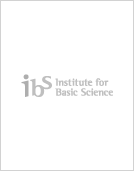mainmenu
Categories
Directory

- Mikyung Shin
- Assistant Professor
- Biomaterial, Hydrogels, Drug Delivery, Medical Device Coating, 3D Bioprinting
- Department of Biomedical Engineering
- mikyungshin

- Information
Nature-inspired Biomateria Lab
Introduction
Our main research scope is to design nature-inspired adhesive materials via catechol or gallol redox chemistry, potential application of which is cardiovascular and neural system. In detail, we have focused on developing a variety of adhesive biomedical formulations (i.e., hydrogels, particulates) exhibiting neuron repair, hemostatic effect, minimally invasive, hemostatic medical devices, adhesion/affinity-based drug-delivery carriers as well as 3D printable inks based on mussel-inspired catechol/its derivatives chemistry for wet-resistant adhesion. The ultimate goal of our research is to design a new generation of biomaterial-based practical medical tools capable of diagnosing and treating actual patients.
Selected Recent Publications
1. Mikyung Shin et al. Nature Materials 2017, 16,147-152
2. Mikyung Shin et al. Nature Biomedical Engineering 2018, 2, 304-317.

- Minue Kim
- Assistant Professor
- Affective Neuroscience, Emotion, Anxiety, Face Perception, fMRI
- Department of Psychology
- minuekim

- https://www.affectiveneurosciencelab.com/
- Information
HumAN Lab (Human Affective Neuroscience Laboratory)
Introduction
The overarching goal of our research is to understand the psychological and neurobiological mechanisms that underpin how we experience our own emotions and evaluate the emotions of others. Our lab examines how different aspects of affective information are encoded, manipulated, and integrated in the brain. We also investigate individual differences in such processes on both behavioral and neural levels, and their implications for mental health. We combine experimental psychology, multimodal neuroimaging (fMRI, dMRI), and computational tools to answer research questions pertaining to affective science.
Selected Recent Publications
1. Kim, M. J., Mattek, A. M., & Shin, J. (2020). Amygdalostriatal coupling underpins positive but not negative coloring of ambiguous affect. Cognitive, Affective, and Behavioral Neuroscience, 20, 949-960.
2. Kim, M. J., Farber, M. J., Knodt, A. R., & Hariri, A. R. (2019). Corticolimbic circuit structure moderates an association between early life stress and later trait anxiety. Neuroimage: Clinical, 24, 102050.
3. Kim, M. J., Mattek, A. M., Bennett, R. H., Solomon, K. M., Shin, J., & Whalen, P.J. (2017). Human amygdala tracks a feature-based valence signal embedded within the facial expression of surprise. Journal of Neuroscience, 37, 9510-9518.
4. Kim, M. J., Shin, J., Taylor, J. M., Mattek, A. M., Chavez, S. J., & Whalen, P. J. (2017). Intolerance of uncertainty predicts increased striatal volume. Emotion, 17, 895-899.
5. Kim, M. J., Gee, D. G., Loucks, R. A., Davis, F. C., & Whalen, P. J. (2011). Anxiety dissociates dorsal and ventral medial prefrontal cortex functional connectivity with the amygdala at rest. Cerebral Cortex, 21, 1667-1673.
6. Kim, M. J., & Whalen, P. J. (2009). The structural integrity of an amygdala-prefrontal pathway predicts trait anxiety. Journal of Neuroscience, 29, 11614-11618.

- Donghee Son
- Assistant Professor
- Self-Healing Materials, Biomedical Devices, Soft Bio-integrated Electronics, Stretchable Neuroprosthetics
- Electronic & Electrical Engineering
- daniel3600

- https://sites.google.com/view/dsonlab
- Information
D.SON Lab
Introduction
Our research group seeks to achieve an unprecedented bio-integrated electronic system that is able to bridge the undesired gapbetween approaches of materials science and medicine, combining applications of soft and/or self-healing materials to highperformance flexible/stretchable devices with translational biomedical engineering efforts.Our research group focuses on 2 kinds of soft bio-integrated electronic systems: Self-healing and stretchable artificial skinsystems and neural devices. We hope that these works will be a valuable stepping stone which brings qualitative improvementto oursociety.Selected Recent Publications
1. "Multifunctional wearable devices for diagnosis and therapy of movement disorders"
Donghee Son+ and Dae-Hyeong Kim* et al. Nature Nanotechnology 9, 397 (2014)2. "Wearable multiplexed array of silicon nonvolatile memory using nanocrystal charge confinement"
Donghee Son+ and Dae-Hyeong Kim* et al. Science Advances 2, e1501101 (2016)
3. "An integrated self-healable electronic skin system fabricated via dynamic reconstruction of nanostructured conducting network" Donghee Son+ and Zhenan Bao*et al. Nature Nanotechnology 13, 1057 (2018)4. "Strain-sensitive stretchable self-healable semiconducting film for multiplexed skin-like sensor array"
Donghee Son+ and Zhenan Bao*et al. Science Advances 5, eaav3097 (2019)5. "Adaptive self-healing electronic epineurium for chronic bidirectional neural interfaces"
Donghee Son*et al. Nature Communications 11, Article number: 4195 (2020)

- Park Jungwon
- Assistant Professor
- 4D microscopy of material chemistry
- 02-880-2259
- jungwonpark

- http://www.jungwon-park.com/
- Information


